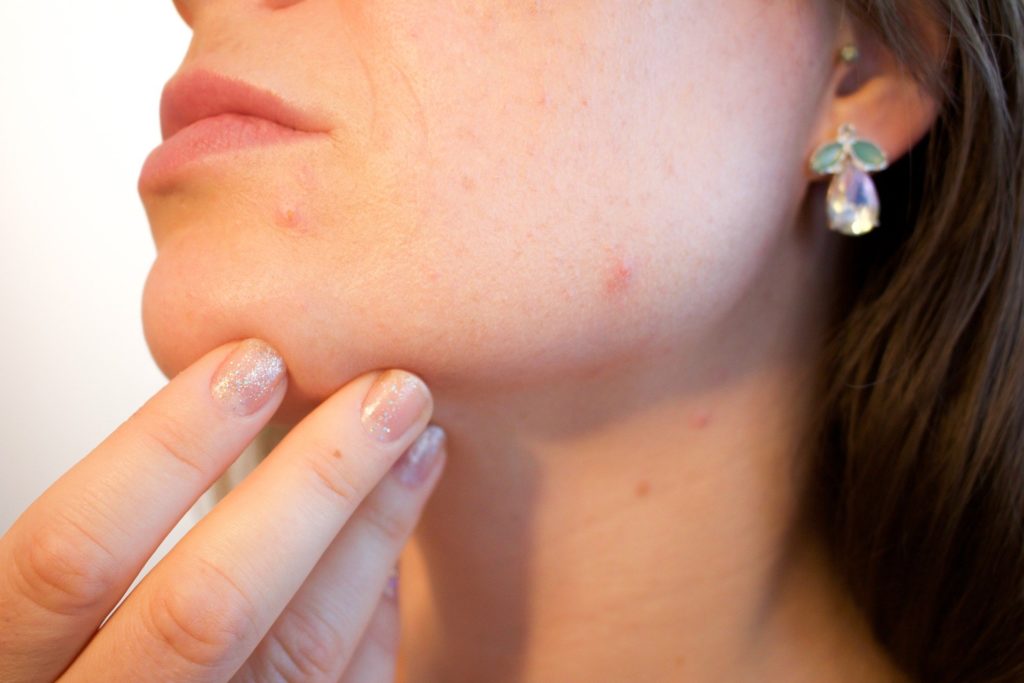Pimples…Where Do They Come From? Seriously.
There are different types of acne. There is one thing common for all of them – they happen because a pore or a hair follicle has some blockage.
Depending on how the pore gets blocked, whether it gets inflamed or not and if the walls of the hair follicle are compromised, you can classify the pimples in different ways.
Just like everything else, understanding the mechanism and the development of an issue is the first step toward solving it. So, let’s learn more about the anatomy of your skin and try to understand how and where the pimples happen.

The Hair Follicle
Your hair follicle is actually, your hair with all its elements and surrounding items, as well as the hole through which it grows. To be more precise, these are the elements that make a hair follicle:
Hair – a single hair has several components. It consists of the hair root and hair shaft. A hair root has a bulb, papilla, and matrix. The shaft is the upper part of the hair.
Pore – there are sweat pores and oil pores. The ones we are interested in now are the oil pores. They are the small openings in the skin through which the hair grows.
Sebaceous duct and gland – sebaceous ducts are tiny tubes through which the sebum, produced by the glands reaches the inside of the pore.
These three elements are the most important in understanding the entire process of pimple formation because this is where it happens. However, we need to learn a bit more about skin to get the gist of this process truly. This is your answer to the question where the pimple happens.
The Skin Layers
You can divide your skin into two big layers: epidermis and dermis. Both of these layers can be divided into more layers. Namely, epidermis consists of 5, while dermis has 3 layers. Let’s take a look and see what these layers are and what they do.
Dermis
This is where the sebaceous glands are. The dermis is a deep skin level in which the nerves, blood vessels, and glands are. That is why this layer of skin is the part that makes the body support the skin cell formation. The blood vessels feed the skin with nutrients, the nerves signal what needs to be done and the glands secrete their substances which enable the skin to function well.
Epidermis
This is the top layer of your skin. It is where the skin cells originate, go through their life cycle, die and shed. From the deepest to the most surface level, the epidermis layers go like this:
Stratum germinativum or stratum basale – this layer has only one layer of cells. More precisely, this is where the cells get born. The process of cell formation is called mitosis.
Stratum spinosum – in this layer of skin the process of keratinization begins. This is a process that eventually results with cells releasing their lipids and replacing it with keratin.
Stratum granulosum – keratinization continues, and the cells now get a granular appearance. They release the lipids so that a protective, waterproof layer of oil is created within the skin to protect it.
Stratum lucidum – this is a particular layer that is only present in the skin of hands and feet.
Stratum corneum – the top layer of the skin, consisting of the already dead cells that are now shedding and being replaced with new ones.
You already know now that the pimple happens in the hair follicle and we now understand that the skin cells are probably the ones that block the hair follicle opening. But, is that all? It just blocks it, and that’s it? Not entirely, there is another element of this equation.
The Bacteria

It’s majesty the Propionibacteria Acnes or P. acnes. It lives in the human skin, and most cases don’t do any harm. However, if the hair follicle gets blocked, it creates a beneficial environment for P. acnes to overgrow.
It does precisely that and creates an infection. That is actually a pimple. If white cells get involved, you will get the puss that turns a pimple into a white head. If the walls are compromised, you can even develop severe acne or even a cyst.